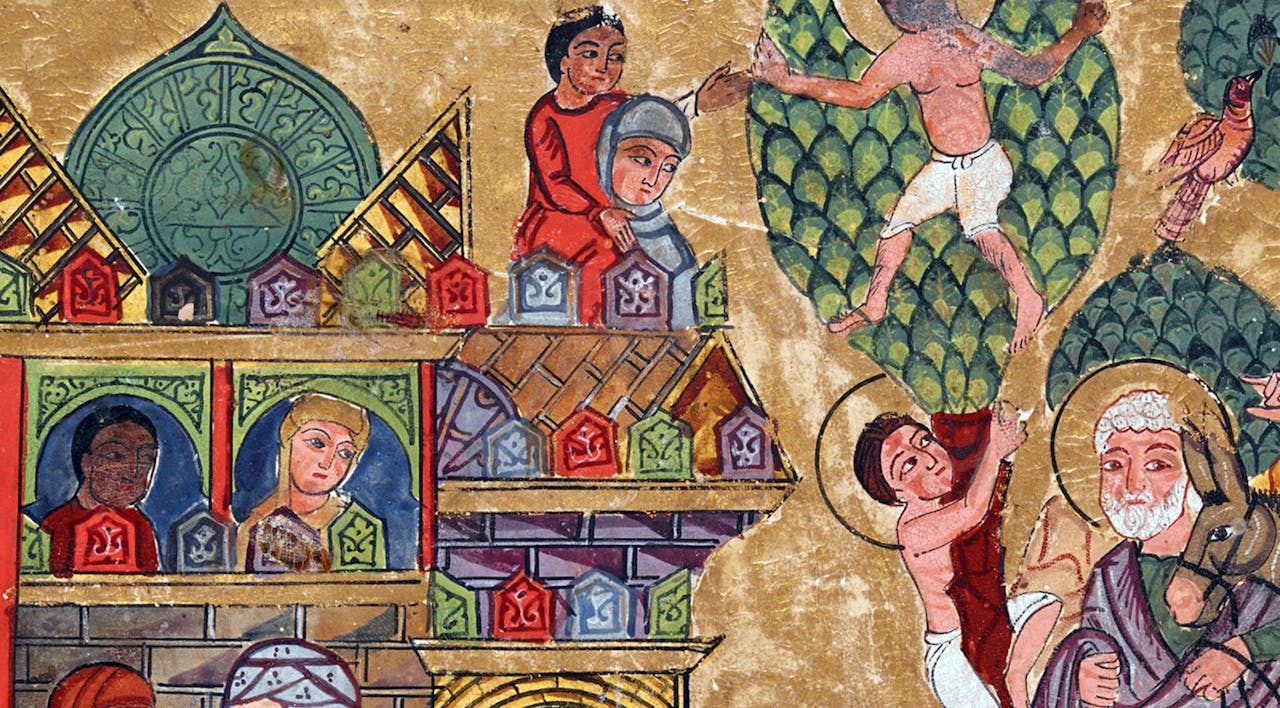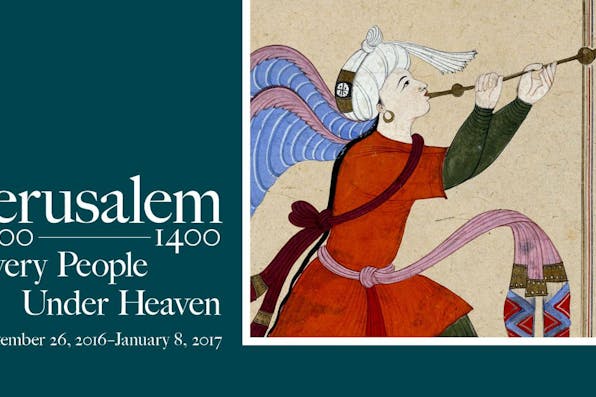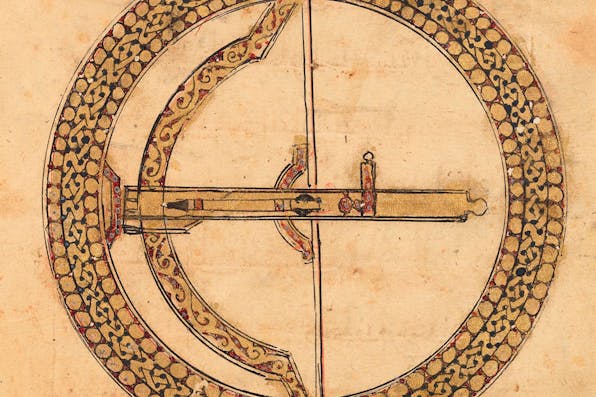
February 2017
Jerusalem Syndrome at the Met
An exhibition on the diverse multiculturalism of medieval Jerusalem has been ecstatically received. There's just one problem: the vision of history it promotes is a myth.
“Severe, Jerusalem-generated mental problems.” Such, as characterized by the British Journal of Psychiatry, is the pathological derangement known as Jerusalem Syndrome. The madness is generally attributed to the city’s intoxicating spiritual powers, recognized over the centuries to inspire wild prophecies, orotund pronouncements, and utopian fantasies sometimes accompanied by predictions of imminent apocalypse.
If you happened to visit New York’s Metropolitan Museum of Art in recent months, you might have detected a particular, very contemporary version of the syndrome lurking in the background of Jerusalem 1000-1400: Every People Under Heaven, a sumptuous and ecstatically received exhibition that closed on January 8 after a three-month run. Or maybe not, if the contagion has spread as widely as now seems—since most visitors, and for that matter most reviewers and critics, were thoroughly seduced by the ravishingly beautiful items on display. These included illuminated manuscripts in exotic calligraphy like the ancient Hebrew script of the Samaritans; caches of gold and jewelry that until recently had been hidden in jars or lay sunk off the Caesarea coast; gilt pages of Qurans; handwritten letters by the medieval Jewish luminaries Moses Maimonides and Judah Halevi; intricately carved capitals from the Church of the Annunciation in Nazareth; and much more.
I hope to unveil the syndrome’s symptoms, mostly unnoticed, that were enmeshed in these displays, and that also appear to have infected the show’s organizers in arranging and presenting them. In a lavishly produced catalog, the exhibition’s two curators, Barbara Drake Boehm and Melanie Holcomb, enthusiastically describe the attraction—they call it, approvingly, a “fever” and a “profound obsession”—exercised by medieval Jerusalem on the minds and spirits of “every people under heaven.” Elaborating further in the catalog’s foreword, Thomas P. Campbell, the director of the Met, finds medieval Jerusalem’s mixture of “multiple competitive and complementary religious traditions” to be so suggestive, with their “harmonious and dissonant voices passing in the narrow streets of a city not much larger than midtown Manhattan,” as to inspire the wish that the same mixture might “find resonance in today’s New York, with its similarly rich mosaic of heritages living side by side,” thereby serving as a corrective to our own fractious circumstances—a model to emulate.



